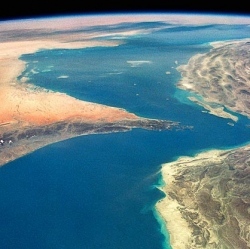
Exoplanets are so fascinating becuase they may harbor life, but the used definition of habitable is so broad that it could include planets that obviously aren’t. To help zero in on the more likely candidates, a British-built satellite called Twinkle will look at the atmospheres of exoplanets to seek more definite signs of life.
According to NASA, there are 1,813 confirmed exoplanets with thousands more candidates under consideration discovered by the Kepler Space Telescope and others using the transit method. That is, the light coming from particular stars was measured over time and any dips in their light curves that may indicate a planet passing in front of them were recorded and measured.
The technique has been remarkably effective, but the information that it returns about the planets is pretty basic. Scientists can deduce the mass and density of a planet, determine if its rocky or gaseous, its distance from its star, its orbital period, and estimate its surface temperature. Unfortunately, those estimates are very rough. According to the definition of habitable as used currently, Earth certainly fits it, but so do Venus and Mars because they also fall inside the Goldilocks zone where liquid water can exist on a planet’s surface.
But to make a real determination, scientists need more data, especially about the atmosphere. Venus, for example, is in the habitable zone, but its superdense carbon dioxide atmosphere rains sulfuric acid and is hot enough to melt lead. Mars, on the other hand, has a vestigial atmosphere of carbon dioxide that lets in deadly radiation and is so dry that it makes the Atacama desert look like a rain forest.
This is where the £50 million (US$76.2 million) Twinkle mission comes in. Scheduled to launch in four years, it’s being built by a team led by University College London and Surrey Satellite Technology Ltd. The latter is using cost-effective design and off-the-shelf-parts to build the orbiter at a tenth the cost of a comparable satellite. In an overview presented at the Royal Astronomical Society on February 6, the team laid out a design for an extremely stable unmanned orbiter that can study the atmosphere of exoplanets.
